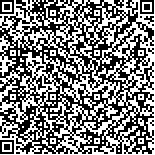刘婷,李川,谷令,等.有氧运动联合高压氧治疗对脑卒中后认知障碍的疗效及氧化应激的影响[J].中华物理医学与康复杂志,2021,43(7):623-627
扫码阅读全文

|
| 有氧运动联合高压氧治疗对脑卒中后认知障碍的疗效及氧化应激的影响 |
|
| |
| DOI:10.3760/cma.j.issn.0254-1424.2021.07.010 |
| 中文关键词: 有氧运动 高压氧 脑卒中 认知功能障碍 氧化性应激 |
| 英文关键词: Aerobic exercise Hyperbaric oxygenation Stroke Cognitive dysfunction Oxidative stress |
| 基金项目: |
|
| 摘要点击次数: 5981 |
| 全文下载次数: 9186 |
| 中文摘要: |
| 目的 观察有氧运动联合高压氧治疗对脑卒中后认知功能障碍疗效及氧化应激指标影响。 方法 选取脑卒中后认知障碍患者50例,按随机数字表法分为高压氧组(采用高压氧治疗)和联合组(采用有氧运动联合高压氧治疗),每组25例,除3例中途出院,2例中途要求退出研究外,最终45例完成研究,即高压氧组21例,联合组24例。2组患者均给予高压氧治疗,治疗参数取压力0.2 MPa(2.0ATA),加压时间20 min,减压时间20 min,戴面罩稳压吸氧时间60 min,中间吸舱内空气10 min,每次治疗110 min,1次/日, 5次/周,共8周;联合组在高压氧治疗的基础上采用下肢功率自行车训练方式进行有氧运动训练,每次训练30 min,1次/日,5次/周,共8周。分别于治疗前和治疗8周后(治疗后),采用简明精神状态量表(MMSE)和蒙特利尔认知评估量表(MoCA)对2组患者的认知功能进行评定,采用改良的Barthel指数(MBI)量表对患者日常生活活动能力进行评定;采用分光光度法对患者血清氧化应激指标还原型谷胱甘肽(GSH)和丙二醛(MDA)含量进行测定,并对治疗后2组患者血清GSH和MDA的含量变化值与患者MMSE评分增加值进行统计学相关性分析。 结果 ①治疗后,高压氧组和联合组患者的MMSE评分[(19.00±3.42)和(21.00±2.78)分]均明显高于组内治疗前[(18.33±3.50)和(18.63±3.36)分],差异有统计学意义(P<0.01),且联合组MMSE评分改善明显优于高压氧组(P<0.05)。治疗后,联合组的MoCA评分[(21.67±2.35)分]较组内治疗前[(19.88±2.94)分]及高压氧组治疗后[(19.81±2.62)分]均有明显改善(P<0.05),但高压氧组治疗后的MoCA评分与组内治疗前[(19.62±2.96)分]比较,差异无统计学意义(P>0.05)。②治疗后,高压氧组和联合组的MBI评分[(81.05±4.62)和(83.21±6.21)分]均较组内治疗前[(77.52±5.15)和(79.00±6.63)分]显著提高(P<0.01),但治疗后组间差异无统计学意义(P>0.05)。③联合组患者血清中GSH含量较治疗前升高(P<0.01),且联合组患者的血清GSH含量升高值与该组患者MMSE评分增加值呈低度正相关(r=0.010,P<0.05);而高压氧组患者血清中MDA含量较治疗前降低(P<0.05),且高压氧组患者的血清MDA含量下降值与该组患者MMSE评分增加值呈低度正相关(r=0.042,P<0.05)。 结论 有氧运动联合高压氧治疗能更有效改善脑卒中后认知障碍;血清中GSH含量升高及MDA含量降低均与认知功能改善呈正相关。 |
| 英文摘要: |
| Objective To investigate the effect of combining aerobic exercise with hyperbaric oxygen therapy on the cognition and oxidative stress of patients with post-stroke cognitive impairment (PSCI). Methods Forty-five PSCI patients were divided randomly into a hyperbaric oxygen therapy (HBO) group (of 21) and a combination group (of 24). Both groups received HBO therapy, but the combination group also performed 30min of aerobic exercise using a cycle ergometer 5 times a week for 8 weeks. The HBO therapy involved 20min for pressurization, 20min of decompression, 60min of pressurized oxygen inhalation and 10min of air inhalation. The treatment pressure was 0.2MPa (2.0ATA). Before and after the intervention, cognitive functioning was measured using the mini-mental state examination (MMSE) and the Montreal cognitive assement (MoCA). The Barthel index quantified ability in the activities of daily living. Serum glutathione (GSH) and malondialdehyde (MDA) were measured spectrophotometrically. Results The average MMSE scores of both groups had improved significantly after the treatment, with significantly better improvement in the combination group. After the treatment, the average MoCA score of the combination group had improved significantly while that of the HBO group had not. The average Barthel index scores of both groups improved significantly and there was no significant difference between them after the treatment. The average serum GSH increased after the treatment in the combination group, and the increase was weakly positively correlated with the increase in MMSE scores. The average MDA content of the HBO group decreased after the treatment, and the decrease was positively correlated to the increase in the MMSE scores, but again weakly. Conclusions Aerobic exercise combined with hyperbaric oxygen therapy can effectively improve cognition among PSCI patients. Increases in serum GSH and decreases in serum MDA are weakly positively correlated with cognitive functioning. |
|
查看全文
查看/发表评论 下载PDF阅读器 |
| 关闭 |